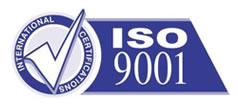Introduction
Elabscience ® Excellent Chemiluminescent Substrate(ECL)Detection Kit is a horseradish peroxidase (HRP) substrate, which can be
used to detect horseradish peroxidase (HRP) labeled proteins or nucleic acids,
analyze protein content by Western blot or ELISA, and is compatible with film
and digital development system.
Components
|
Cat.
|
Products
|
50
mL
|
100
mL
|
500
mL
|
Storage
|
|
E-IR-R307A
|
ECL
Substrate A
|
25
mL
|
50
mL
|
250
mL
|
2~8°C
|
|
E-IR-R307B
|
ECL
Substrate B
|
25
mL
|
50
mL
|
250
mL
|
2~8°C
|
Instructions
1. Western Blot
1) Follow the step of Western Blotting to block the
membrane and incubate the primary/secondary antibody.
2) Wash the membrane with TBST for 3 times, 5 min each
time.
3) Prepare ECL Working Solution by
mixing equal parts of the ECL Substrate A and ECL Substrate B.
Note: Prepare the working solution before use, and change the pipette tips
during the suction process.
4) Take an
appropriate amount of mixed ECL Working Solution and add it to the membrane.
5) Adjust the
exposure time according to the intensity of the luminous intensity
2. ELISA
1) Prepare Working Solution by
mixing equal parts of the ECL Substrate A and ECL Substrate B.
Note: Prepare the working solution before use, and change the pipette tips
during the suction process.
2) Add 50~200 μL mixed ECL Working Solution to each well into the microtiter plate.
3) Detection
within 10~60 min, better within 40~50 min.
Storage
Store at 2~8°C for 12 months.
Cautions
1. Before using
this product, the imprinting film must be thoroughly washed, otherwise it may
cause the background to rise.
2. ECL Substrate A and ECL Substrate B must be prepared before use, and
change the pipette tips during the suction process.
3. Do not expose
ECL working solution to sunlight or strong light, otherwise it will cause its
inactivation, and laboratory light will have little effect on the working
solution.
4. NaN3 inhibits HRP activity, NaN3 should be avoided
during the experiment.










